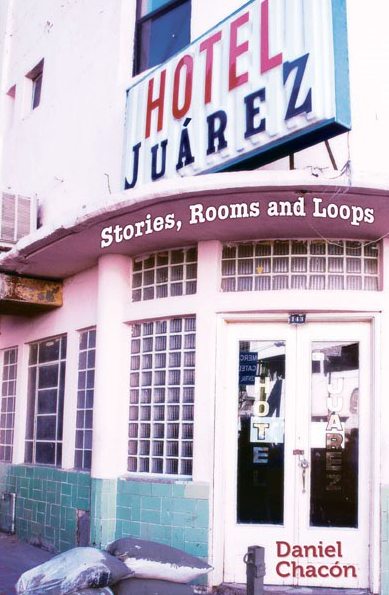Hispanic millennials are turning their backs on Spanglish—a slang that mixes English-language norms into Spanish—and instead opting for proper American English.
“The typical trend is that the first [generation] prefers to speak Spanish, the second generation is bilingual, and the third generation is generally monolingual,” Jody Agius Vallejo, an associate professor of sociology at USC who studies immigrant integration told the Los Angeles Times.
But there is more going on than the natural trajectory of how immigrant groups assimilate to become Americans.
The fading of Spanglish, not unlike Ebonics, could be a response to two separate trends we have seen over the last decade: terrorism and gender-empowerment.
Spanglish flourished in the 1980s and 1990s. Two factors fueled its rise. The first was the economic collapse of Latin America, an international debt crisis precipitated when Mexico was forced to devalue the peso in August 1982. The ensuing economic crisis resulted in a “lost decade” from Mexico to Argentina. Hundreds of thousands of Latin Americans moved to the United States as economic refugees.
Then there were the “dirty wars” in Central and South America that saw hundreds of thousands of political refugees flee to the United States, giving rise to “sanctuary cities,” especially in California.
The result was the influx of Spanish-dominant immigrants—economic and political refugees alike—many of whom struggled to learn English. As they became acculturated, they began to “forget” their Spanish vocabulary. “Lunch” replaced “almuerzo;” “troco,” a corruption of “truck,” replaced “camion.”
Waves of Spanish-dominant immigrants struggled with acculturation on their way to assimilation. In the process they availed themselves to “Spanglish”— a mix of English and Spanish that consists of calques and semantic extensions. Calques are literal, word-for-word translations of words or phrases from one language into another. For example, “I’ll call you back” becomes “Te llamo para atrás,” instead of “Te devuelvo tu llamada.” Semantic extension refers to a phenomenon when speakers use a word more similar to that of a second language in place of their own. For example, “Close the window because it’s raining,” becomes “Cierra la window que está reinando.”
Some observes heralded the rise of “Spanglish” as a hybrid language. Ilan Stavans, a Mexican immigrant, championed this “dialect” spoken in the Hispanic diaspora in the United States as a proper language, evidence of his own struggles assimilating into American society.
Then came the terrorist attacks of September 11, 2001.
“Fortress America” resulted in the establishment of the Department of Homeland Security. Immigration from Latin America has fallen to historic lows. Barack Obama ordered the deportation of “illegals” — and more than 3 million Latin Americans will have been deported by the time he leaves office.
Read more NewsTaco stories on Facebook. >>
In addition, peace broke out in Central America; and Mexico has enjoyed a period of sustained economic growth, with millions of Mexicans entering the middle class.
As a result of the slowdown in immigration from Latin America, the U.S. Hispanic population is now mostly U.S.-born, not immigrants. As the Pew Hispanic Center reported, “In 2013, U.S.-born Hispanics outnumbered foreign-born Hispanics by nearly two-to-one—35 million to 19 million—and made up a growing share (65%) of the nation’s Hispanic population.”
As Hispanics have now become English-dominant, the need for Spanglish may be disappearing.
In fact, many Hispanic millennials have gone one step further: they don’t speak Spanish at all.
In a surprising analysis, the Pew Hispanic Center reported that 71 percent of U.S. Hispanics believed that speaking Spanish was not necessary to their “Latino” identity.
Why this repudiation of Spanish? One reason could be that unlike English, it has a gender binary.
In the 2010s, as part of promoting diversity and inclusivity, U.S. Hispanic youth sought to transcend gender in Spanish—el hombre; la mujer. The first attempt, Latino/a, proved cumbersome. The second solutions, the “at sign,” or asperand, proved equally dissatisfactory simply because it is a symbol, not a letter: Latin@.
In recent years some activists have demanded that Spanish remove gender altogether: niño andniña would become niñx.
The absurdity of the proposition—that English-language speakers would dictate how Spanish speakers speak Spanish—smacked of cultural imperialism and linguistic neo-colonialism.
Enter Hispanic millennials who have solved the problem by simply refusing to consider Spanglish—or even speak Spanish.
“Fully 89 percent of U.S.-born Latinos spoke English proficiently in 2013, up from 72 percent in 1980.
This gain is due in part to the growing share of U.S.-born Latinos who live in households where only English is spoken,” the Pew Hispanic Center reported.
Marketers are taking note—and ridding media advertising of Spanglish. Instead, they are careful to use proper English and proper Spanish. Their most “difficult” decision is not whether to use Spanglish words, but whether to use the formal (usted) or formal (tu). (For broadcast, it’s informal; for written it’s formal.)
When Target Style wanted to reach Latina millennials during the Billboard Latin Music Awards with their “Influencer” campaign, they recoiled from the very idea of using any Spanglish. Their campaign, “Show off your way,” was translated in proper Spanish: “Lúcete a tu manera.”
Madison Avenue is catching on to the trend: To reach Hispanic millennials, use either proper English or proper Spanish, but not Spanglish.
The rise of English-dominant Hispanic millennials is now reverberating throughout the United States. Three of the leading Hispanic millennials writing today are Kristiana Rae Colón, Christopher Soto (aka Loma), and David Tomás Martínez. Their prose is exclusively in English and there is almost no reference to Spanglish; its only appearance is for ironic effect.
Hispanic millennials, who are defining their identity in English, could represent the graveyard of Spanglish.




